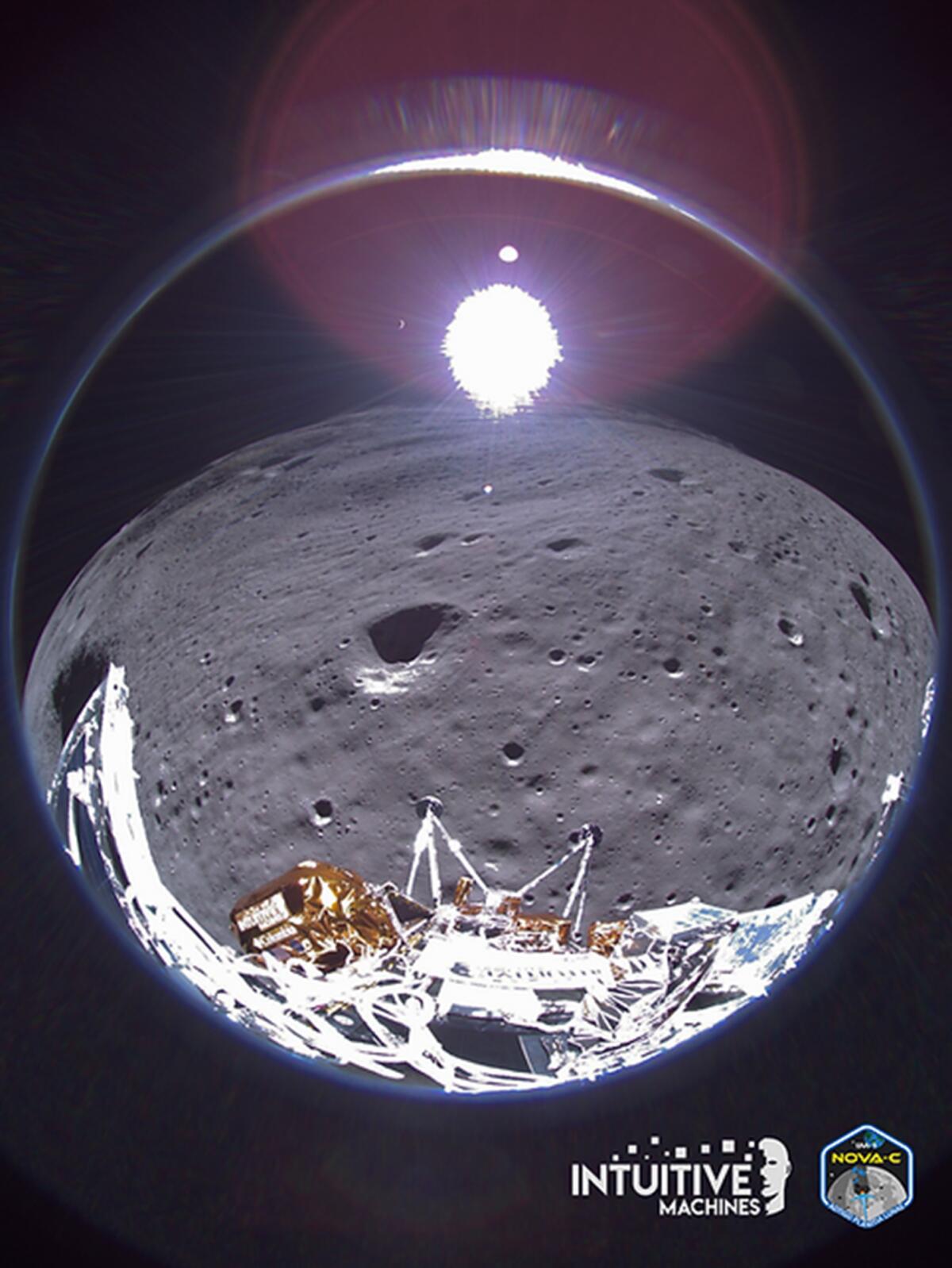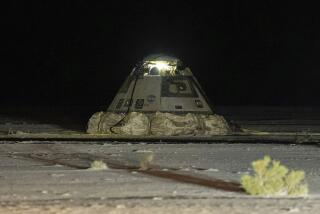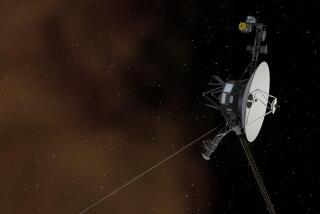First U.S. moon lander in half a century stops working a week after tipping over at touchdown

- Share via
CAPE CANAVERAL, Fla. — The first U.S. spacecraft to land on the moon since the Apollo program fell silent a week after breaking a leg at touchdown and tipping over near the lunar south pole.
Intuitive Machines’ lander, Odysseus, lasted longer than the company anticipated after it ended up on its side with hobbled solar power and communication.
The end came Thursday as flight controllers received one last photo from Odysseus and commanded its computer and power systems to standby. That way, the lander can wake up in two to three weeks — if it survives the bitterly cold lunar night. Intuitive Machines spokesman Josh Marshall said these final steps drained the lander’s batteries and put Odysseus “down for a long nap.”
“Good night, Odie. We hope to hear from you again,” the company said on the social media platform X.
Before losing power, Odysseus sent back what Intuitive Machines called “a fitting farewell transmission.”
Taken just before touchdown, the picture shows the bottom of the lander on the moon’s pockmarked surface, with a tiny crescent Earth and the sun in the background.
The lander was originally intended to last about a week on the moon.
Houston-based Intuitive Machines became the first private business to land a spacecraft on the moon without crashing when Odysseus touched down Feb. 22. Only five countries had achieved that since the 1960s, including Japan, which made a sideways landing last month.
Odysseus carried six experiments for NASA, which paid $118 million for the ride. The first company to take part in NASA’s program for commercial lunar deliveries never made it to the moon; its lander came crashing back to Earth in January.
NASA views these private landers as scouts that will pave the way for astronauts due to arrive in a few years.
Until Odysseus, the last U.S. moon landing was by Apollo 17’s Gene Cernan and Harrison Schmitt in 1972.
More to Read
Sign up for Essential California
The most important California stories and recommendations in your inbox every morning.
You may occasionally receive promotional content from the Los Angeles Times.










